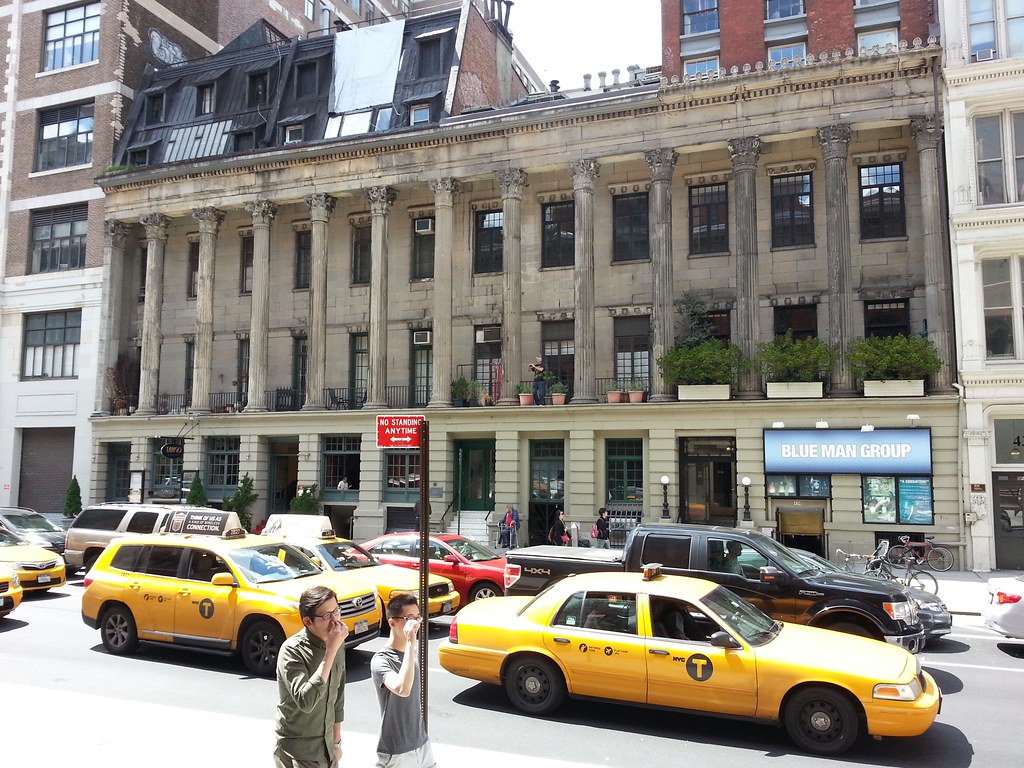When it was built in 1833 Colonnade Row was the biggest thing in New York since the British occupation, a 200-foot-long sweep of glistening white marble in the form of a Corinthian colonnade, nine houses combined into one great Greek revival statement on what is now Lafayette Street, opposite the Public Theater.Read the rest here!
But five of the houses were destroyed early in the last century, and their graceful fluted columns and Corinthian capitals were carted away, vanished from the city with the dust of demolition. Vanished, that is, until a garden designer and a Benedictine monk solved the decades-old puzzle of a mysterious Lost City in the woods of a New Jersey monastery.
The rightmost house in Colonnade Row is currently home to the Astor Place Theatre, where, as you can see, the Blue Man Group performs. Here's an NY Times piece (with lots of photos) about a guy named Sturgis Warner who moved into a 700-square-foot apartment in the little brick addition built on top of that house back in 1978, when it was a mouse- and roach-infested wreck. He fixed up the place and designed and installed all sorts of clever space-saving devices to make the most of the room he had. In exchange for his work, the landlord only made him pay $250 per month in rent.
By the time the article was written in 2009, he was still only paying $500 per month! (I don't know much about paying rent in New York, but the place would go for several times that amount on the open market. Anyone have a better estimate?) The producers of the Blue Man Group had bought the building in 2001, however, and were looking to kick him out so they could take over the whole place as their own living quarters. I have no idea what's transpired since then, although there is still a whitepages.com listing for Mr. Warner at this address, for what it's worth.




